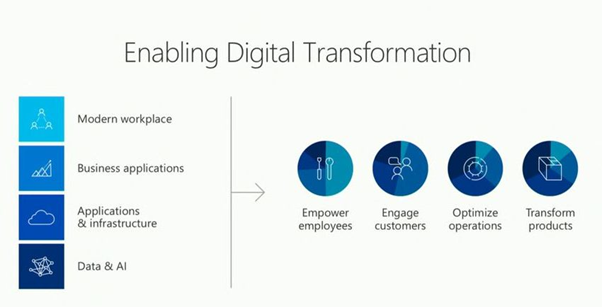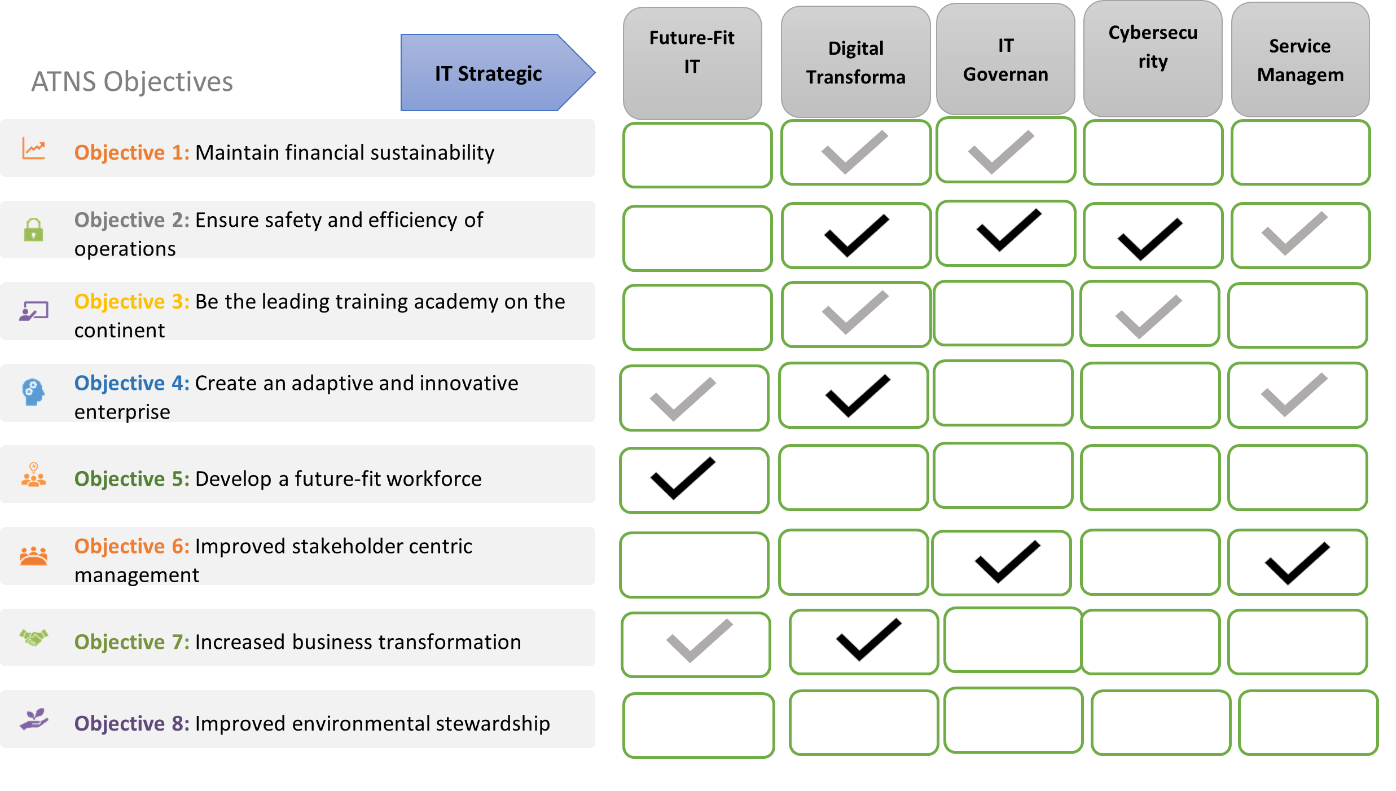|
Getting your Trinity Audio player ready...
|
By Anna Sanfilippo – Online and Mobile Applications Specialist
“The COVID-19 crisis has not only highlighted the critical role of information and communication technologies (ICTs) for continued functioning of societies, but has also brought to the fore the startling digital inequalities between and within countries. At the same time, the COVID-19 pandemic has highlighted the urgency of accelerating digital transformation and advancing the goals and targets of the Connect 2030 Agenda to leave no one behind.” – World Telecommunication & Information Society Day, 17 May 2021 (itu.int)
Digital Transformation is the adoption of digital technology to transform services and/or businesses, through a process of replacing non-digital, or manual processes, with digital processes. It also requires the replacing/upgrading of outdated digital technology with newer digital technology. – Wikipedia
Digital transformation, being the use of technology to radically improve performance or reach of organisations, is hot topic for companies across the globe. Digital transformation goes beyond implementing new technology – it requires effective strategy, coordination, and delivery. This may involve changes to and modernisation of network architecture, hardware, software, IT service management, and data storage and access. Executives in all industries utilise digital advances such as analytics, mobility, social media, and smart embedded devices, as well as improving their use of traditional technologies such as ERP to change customer relationships, internal processes and value propositions.
The COVID-19 crisis quite unexpectedly and unceremoniously catapulted us into the digital era – whether we were ready for it or not. Digital transformation is an enterprise-wide effort that can realise many benefits.
Increased IT and operational optimisation
Digital transformation entails updating our technology ecosystem, which results in greater productivity, time-saving automations, reduced operations costs, and increased security across our IT infrastructure. This includes the implementation of cloud services into critical business functions. This serves to enhance structures, procedures, workflows, and collaborations.
Cloud migration, within the digital transformation paradigm, is rapidly gaining momentum within an increasing number of organisation that are realising the benefits of cloud adoption. Some such benefits include ease of data access, increased storage capacity, increased security, reduced costs, and seamless collaboration with colleagues (amongst others). The business drivers for cloud migration varies, but for ATNS and many other organisations that have recently adopted cloud integration, the COVID-19 pandemic necessitated rapid adoption of selected cloud services to ensure continued operations and revenue generation. However, the major benefits to business are realised when transformation achieves strategic organisational goals and objectives. The complexity of cloud migrations requires in-depth planning in relation to which workloads to migrate, cost of cloud services (ROI), associated risks, timelines, and operational success.
For ATNS, the cloud migration strategy seeks to demonstrate how innovation and future-fit capabilities (as guided by the organisation’s vision and IT strategy) can be achieved.
This strategy includes the following key elements of cloud migration:
- Understanding cloud migration and how it benefits ATNS.
- How the various cloud services address specific needs of the business (IaaS, PaaS, SaaS).
- Cloud migration approach – why to migrate, what to migrate, how to migrate, and when to migrate.
- Aligning with the IT strategy in terms of Infrastructure and application modernisation, data modernisation, and the modern workplace.
- Achieving strategic goals, objectives, and alignment with organisational plans.

Enhanced flexibility and security within a decentralised workforce
At the height of the national lockdown in 2020, most employees were working from home on a full-time basis. Although the start of 2021 ushered in a return of employees to the workplace, a hybrid working model was adopted and seems likely to be a permanent way of working. This decentralised workplace and the increase in employees working remotely on a full-time basis, has required the adoption of a new business approach that facilitated increased flexibility in terms of access and secuer collaboration that is appropriately layered with cybersecurity controls that protect the endpoin (where the data is housed), as opposed to being previously domiciled on a centralised network.
A more scalable, agile IT Infrastructure
To evolve alongside organisational changes, the business demands flexible technology that is consistently secure, cost-effective, and unified. We must free the organisation from legacy applications. Cloud solutions offer unparalleled agility and scalability, enabling us to respond and pivot quickly to new or unforeseen challenges.
The importance of digital transformation
In a constantly changing world, the equation is simple: adapt or die. Wits Business School’s Brian Armstrong says companies that have failed to transform do not grow.
“South African companies should take digital transformation seriously as failure to do so could affect their share prices in the long term.” – Wits Business School’s digital business chair Brian Armstrong.
Brian furthermore asserts that “Companies that have failed to transform have shown only one percent growth in their share prices over 10 years. However, those that have embraced digital transformation and provided digital services have delivered 10 percent in annual compound rate of growth in their share prices”.
Traditional IT was not set up to deliver new projects in rapid succession. The pandemic has demonstrated how quickly entire industries can shift and that as a result, IT infrastructures requires secure, reliable, cost-effective technology that can scale alongside businesses. ATNS, like many organisations, is encumbered by legacy technology and processes that hinder agility and innovation.
Digital transformation is one of the five strategic objectives for IT, with IT Governance, Cybersecurity, IT Service Management, and Future-Fit IT being the other four. These objectives, aligned to the ATNS Corporate Strategy, will support our Corporate strategic objectives across all three of the strategic pillars: Service Excellence; Sustainability; and Innovation.

Digital Workplace
The Digital Workplace is the notion that there is a modern, virtual equivalent to the traditional, physical workplace. The ATNS Digital Workplace programme consists of planned and managed deployment of Microsoft cloud-based products for office productivity, engagement, mobility, and security.
Application and Infrastructure Modernisation
Modernisation objectives, driven by the business context, dictate that future application and infrastructure solutions leverage data-driven modern architectures, such as cloud and microservices.
Data Modernisation
The lack of real-time data analytics poses serious threats to informed decision making, as data analysis and decisions lag critical events. Modern data capabilities enable not only real-time analytics, but integration of a multitude of internal and external data sources, scalable infrastructure, and cognitive computing. These are essential capabilities to support operational, tactical, and strategic decision making in today’s business context.
SDLC modernization
The SDLC (Software Development Lifecycle) is a process centred on the delivery of the right products, and on delivering the products right. ATNS must re-design the SDLC process in recognition of today’s transformed and ever-changing business landscape, and the modernisation imperatives articulated in the ATNS strategy 2025.
Benefits of digital transformation
Digital transformation isn’t only about adapting and surviving. It is about reaping the benefits that will assist ATNS to successfully thrive into the future. A successful digital transformation will allow us to:
- Boost user experience. Many of the innovations in digital technology are aimed at increasing the user engagement, which in turn creates a superior user experience.
- Enrich data. Digital transformation opens a new world of data-related possibilities – both in terms of collection methods and analysis of complex data sets. The net result is a better understanding of our business landscape, with deeper insights and predictions.
- Encourage agility. The ability to act with agility before your competitors represents a real advantage.
- Create unity. Implementing digital transformation often means various departments and employees must work closely together. Everyone will need to pursue a common purpose. This in turn will result in a more collaborative culture.
- Laying out clear priorities;
- Investing in talent – particularly in leadership;
- Committing time and money;
- Embracing agility; and
- Empowering people.
An unexpected outcome of COVID-19 is that companies have realised the benefits of fast-tracking digital transformation.
To be a trusted business partner and technology solutions advisor in enabling leading ATM solutions in Africa.
IT Mission:
To provide secure, enterprise-grade information technology solutions and services that enable safe and efficient Air Traffic Management solutions.
About Anna Sanfilippo
Anna is a dedicated and technically-skilled business professional who is exceptionally adept in her administrative skill, which she has honed through her experience in excess of 30 years. An excellent problem-solver, Anna excels in resolving challenges with innovative solutions, systems, and process improvements. “I strive to increase efficiency, customer satisfaction and the bottom line”, says Anna. She describes herself as “a social media protagonist and SharePoint evangelist, with a wide knowledge and interest base. Passionately committed to community initiatives with a special emphasis on early childhood development, education, the elderly and women and children”.






